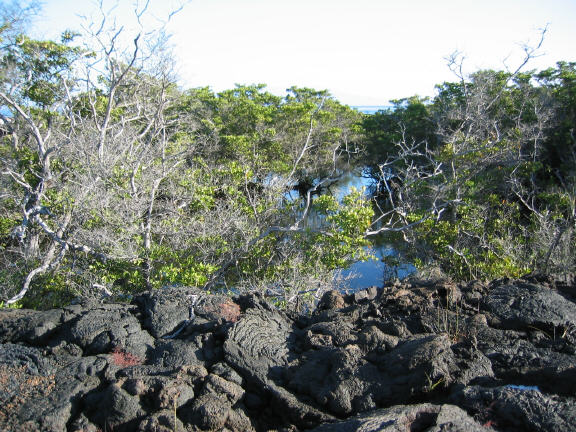
Our morning excursion was to Punta Moreno. We found a fairly large tidal pool with mangrove trees on one side. Mangroves are interesting because God designed them to handle the stresses of living so close to the water. Salt spray inhibits the growth of most plants because it dries out the tissues. (Ever use a saline nasal spray?) God enabled the mangroves to handle the salty conditions, and to actually grow in salt water, because their leaves have special glands that excrete the salt.
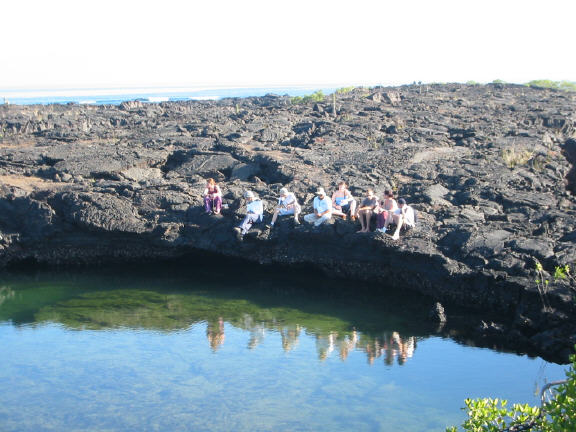
On the other side of the mangrove trees, the tidal pool appeared much more desolate. We encountered a green sea turtle, approximately four or five white-tipped sharks, a half dozen puffer fish, and assorted other fish trapped until high tide.
We were able to observe and photograph the sharks from overhanging lava cliffs that were perhaps 10 feet directly above the sharks.
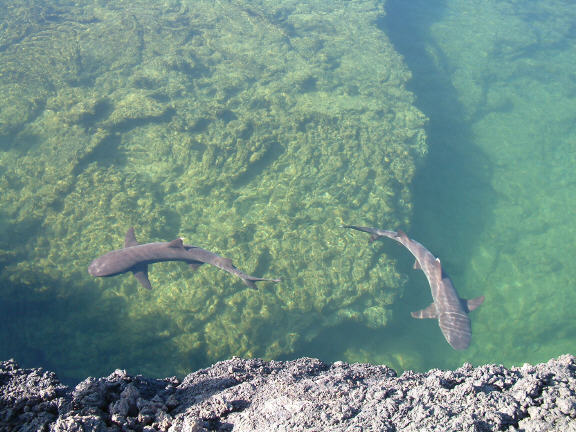
A couple of white-tipped sharks.

Punta Moreno was some of the most barren landscape we saw, and the tugged lava rock made for exceptionally difficult hiking.
I wish I had my hiking boots, but we had to observe weight limits for our luggage, and the hiking boots didn't make the cut. If I'm ever able to go again, there are two things I would be sure to bring: hiking boots and a personal tape recorder for the mini-lectures from the tour guides along the way during each excursion.
The black and white stick is the trail marker--unlike other kinds of trails, this one doesn't get worn down by foot traffic!
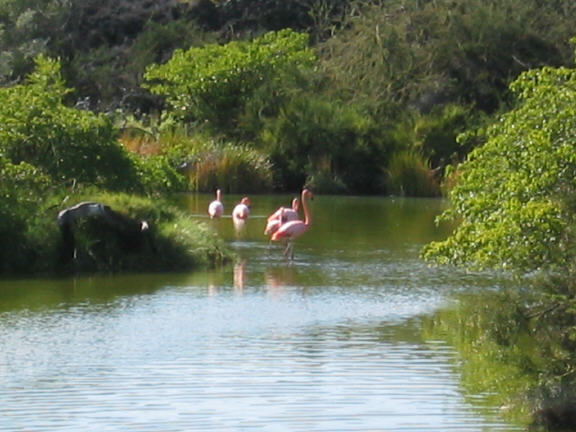
About a quarter mile inland we found a fairly large brackish pool that was harboring approximately seven flamingoes.
Flamingoes are not born pink; their pink color comes from the food they eat. We were struck by how much pinker the flamingoes were here, in the wild, compared to ones we've seen in zoos and other parks.
Flamingoes are a Caribbean bird. The original population was probably blown to the Galapagos by a strong wind. This is one of the amazing things about the Galapagos Islands: you can see tropical flamingoes living not far from penguins originally from the Antartic!
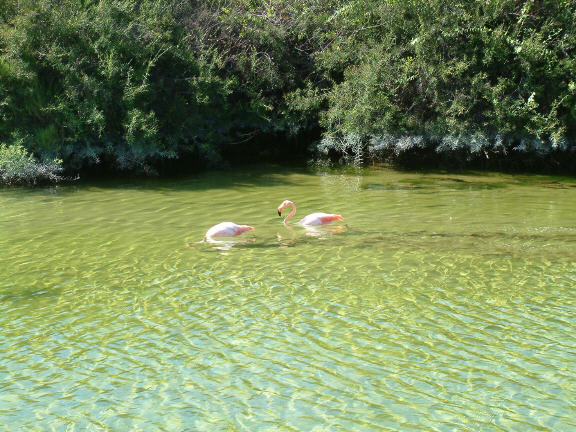
The flamingo with its head under water is feeding. It scoops up mud from the bottom, filtering out the food from the mud with baleen, the same filter system some whales have.
Just beyond this area here is a stark lava landscape. All this vegetation is on the very edges of it. It is brackish water, which is what flamingoes require. The water has been higher--you can see the salt encrustation on the vegetation.
There are now 830 flamingos throughout islands, up from 600 several years ago. This is an effect of El Nino, which brings huge amounts of rain, and brings in warmer waters from a change in current. The warmer waters cut off the flow of nutrients from the cold deep-sea waters, so El Nino drastically cuts back marine life. Since there's a drop in the number of fish to eat, seabirds and sea lions have a population crash during El Nino years. But it's a huge boon to land creatures since they get lots of water in the form of rain, which allows the vegetation to grow and gives them more food to eat. Their populations rise, as we can see in the change in the number of flamingoes.
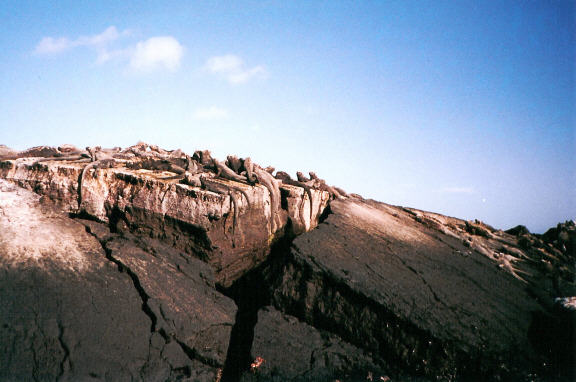
Because the morning hike was so rigorous, the Legend guides offered an alternative extended dinghy ride in Punta Moreno for the people who weren't up to the difficult terrain. Since the other group on our ship was an Elderhostel tour, the riders filled two dinghies. Sue was intrigued by the huge marine iguanas sunning themselves at the water's edge.
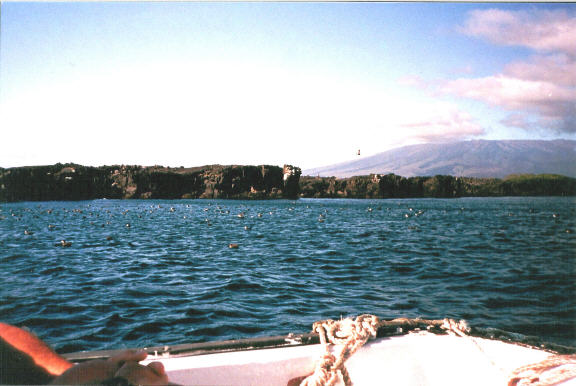
Punta Moreno means "dark point," taking its name from the very dark, new rocks formed by the lava flow from a fairly recent volcano eruption. The volcano was several miles away (you can see it in the distance), and it was staggering to think of lava flowing several miles down the volcano to get to the sea, where it immediately cooled and hardened. The catastrophic special effects didn't require a Hollywood studio to produce, either!